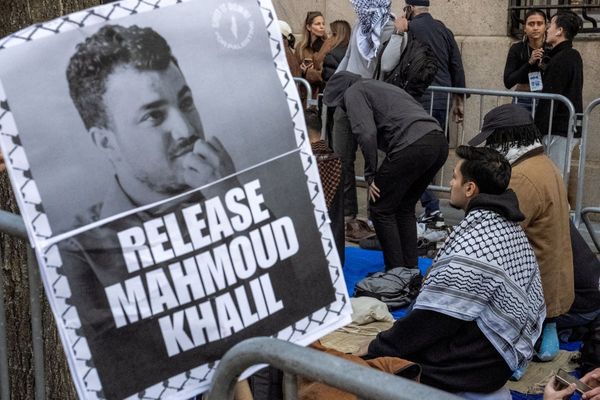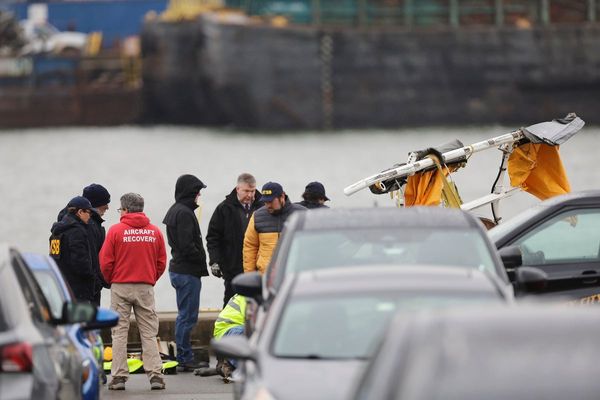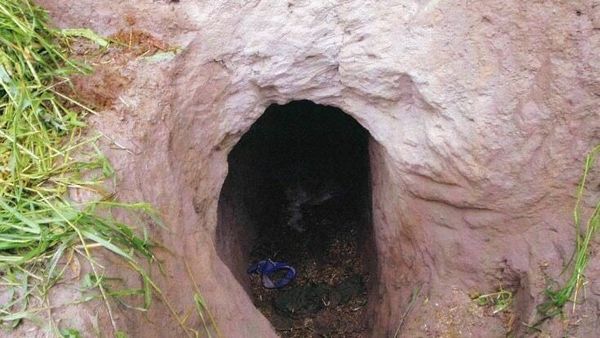
Ben Roberts-Smith’s former patrol commander has denied in court accusations he ordered the execution of an elderly Afghan prisoner discovered hiding in a tunnel – in an alleged “blooding” of a junior soldier.
The retired soldier, anonymised before the court as Person 5, was directly challenged on Tuesday by lawyers for three newspapers being sued by Roberts-Smith: “You told [soldier] Person 4 to murder the old man.”
“That isn’t true,” Person 5 replied.
Roberts-Smith, a recipient of the Victoria Cross, is suing the Age, the Sydney Morning Herald and the Canberra Times for defamation over a series of reports he alleges were defamatory and portrayed him as committing war crimes, including murder.
The newspapers are pleading a defence of truth. Roberts-Smith denies any wrongdoing.
The cross-examination of Person 5 has concentrated on an Australian SAS raid on a compound known as Whiskey 108 – in the Taliban redoubt of Kakarak village in Uruzgan province – on 12 April 2009, with a particular focus on apparent inconsistencies that have emerged in evidence.
It is not contested two men were killed during that raid: a disabled man with a prosthetic leg and an elderly man. But irreconcilable versions of events have emerged about how they were killed.
The newspapers allege the two men were discovered hiding in a small tunnel inside the compound, where ordnance was also found. The men were brought from the tunnel and taken into custody before, the newspapers allege, Person 5 ordered a junior soldier, Person 4, to execute the elderly man, a command obeyed with the acquiescence of Roberts-Smith.
Person 4 was a new soldier to the regiment and was allegedly being “blooded” – ordered to make his first kill on the battlefield.
The newspapers say the man with the prosthetic leg was murdered by Roberts-Smith, who, it has been claimed, “frog-marched” the man outside the compound and threw him to the ground before machine-gunning him to death.

The court has heard from a number of Australian soldiers on the raid that day, who were subpoenaed by the newspapers and have testified they saw men pulled from the tunnel. Others say they witnessed the disabled man’s execution.
The killing of the man with a prosthetic leg has become a key allegation – the man’s leg was souvenired by another soldier and taken back to the SAS’s unofficial bar on base, the Fat Ladies Arms, where it was used as a macabre war trophy and drinking vessel.
Both Person 5 and Roberts-Smith have consistently told the court there were no people discovered in the tunnel and that the claims the men were unlawfully killed were false.
Roberts-Smith said he shot and killed the man with the prosthetic when he saw him running – armed and posing a potential threat to Australian soldiers. He said the man was an insurgent and a legitimate target killed within the laws of war.
In his evidence, Roberts-Smith said the elderly man, also an insurgent, was shot by another Australian soldier whose identity he, to this day, does not know. He credits the soldier with saving his life.
However, Person 5 told the court Person 4 shot the elderly man in a legitimate engagement, and that this was known to the Australian soldiers because it was discussed at a troop debrief after the mission.
In a tense exchange with Nicholas Owens SC, acting for the newspapers, Person 5 defended his evidence before the court and his actions at Whiskey 108.
“You saw the man who came out of the tunnel as the perfect opportunity to ‘blood’ Person 4,” the barrister said on Tuesday.
“No, I disagree with that,” Person 5 replied.
“I want to put to you that you had assessed that the two men that came out of the tunnel were insurgents … and you thought, didn’t you, that you couldn’t trust the Afghan judicial system to keep these two men off the battlefield?” Owens said.
“No, I don’t agree with that,” the ex-soldier said.
“It frustrated you, didn’t it, that people would be taken back to [the Australian base at] Tarin Kowt and then shortly afterwards would be found out on the battlefield?” Owns said.
“No, it’s an accepted part of the game. We knew that the judicial system was corrupt and they’d be back,” Person 5 said.
“I then want to put to you that when you told Person 4 to kill the old man, Mr Roberts-Smith didn’t say or do anything to disagree with your order, correct?”
“I don’t agree with that,” was the reply.
“Just to be very clear, what I want to put to you is that the old man was a PUC [person under control] who was found in the tunnel,” Owens said.
“No, I don’t agree with that,” Person 5 said.
Person 5’s cross-examination focused on photographs of the two men’s bodies, in particular where the bodies lay and whether they had been moved after being shot. Owens put it to Person 5 the men were photographed where they were killed and that the photographs of their corpses did not show evidence of them having been moved.
Roberts-Smith and Person 5 have both told the court the bodies were moved back to a safer space, behind cover, to perform so-called sensitive site exploitation on the bodies – essentially checking them for weapons, communication devices, identification cards or any other material that could yield useful information.
Both Person 5 and Roberts-Smith claim to have removed the prosthetic leg from the slain man. At the time he was killed, it was believed he might have been Objective Xiphos, a Taliban operative known to conceal bomb-making materials in his prosthetic leg.
The man killed was not Objective Xiphos.
Roberts-Smith has told the court previously: “I removed the prosthetic leg when we were doing SSE”. He said he did not re-attach it to the man’s body, but left it, “somewhere near the body – on the body, next to the body, back in place”.
However, Person 5 told the court on Tuesday he took the leg off the body and checked it for explosives.
Cross-examined about the prosthetic, Person 5 told the court: “I know that I took the leg off – that’s a fact.”
The trial, before justice Anthony Besanko, continues.










